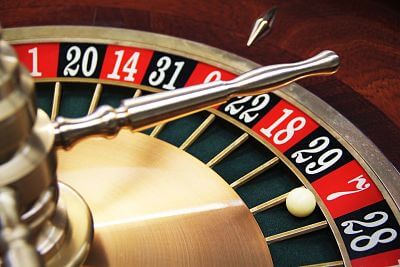Even though Roulette is centuries old (traced all the way back to Ancient China, Greece and Rome), according to the popular opinion, there are still no reliable methods of beating the wheel and predicting with any certainty where the ball will land. The very core of this table game is its unpredictability and the random behaviour of the ball, which earned Roulette the reputation of a true game of chance. There is however a number of modern physics devotees and Roulette enthusiasts who would disagree with this notion, arguing that there is no true randomness and that literally everything can be calculated and accurately predicted – including the dance of the ball and wheel.
The predictability of Roulette spins and its final outcome is determined by several factors, such as Ball Bounce and ball scatter, which are closely related to (and conditioned by) Dominant Diamonds, Dealer Signature, angle of the wheel and track itself. Each of the elements can be reviewed separately, but considering them as an interactive whole can actually push you to the very brink of understanding the wheel and ultimately beating it.
Ball Bounce and Ball Scatter vs Dominant Diamonds
If we stop for a second and look at the scientific side of Roulette, we can easily come to a conclusion that the only true myth of Roulette is its randomness. For example, monitoring the ball behaviour through a series of 30, 50, 100 or more spins, we can begin to notice a pattern in the way the Ball Bounces and scatters across the wheel.
One particular element that will directly affect the Ball Bounce and Scatter is a Dominant Diamond effect, caused by the metal pieces integrated in the Roulette wheel. Careful observers will soon notice that the ball is more attracted to certain Diamonds, gravitating towards them more often – which is why they are called Dominant.
What Causes Dominant Diamonds Effect and Ball’s Route
The reason Ball tends to hit some Diamonds more frequently is hidden beneath a couple of factors invisible to human eyes. Yet, they cannot be ignored, as they are the direct causes of how the ball will bounce and where it will finally rest. It all starts with the ball track, as one of the main factors that will determine the speed and direction of the ball, through the delicate fractures that are formed on the track’s coated surface. These minor damages occur through time, but they exist even on the brand new wheels, as manufacturing defects cannot be avoided; no matter how minor they seem, they still have the power to change the course of the ball and re-route it to the specific part of the wheel.
Additional factor that can sway the ball, leading it to one of the Diamonds is the wheel angle. It is sufficient for the surface that holds the wheel to only be one 0.03” steep in order to effectively influence the path of the ball. The same goes for the very construction of the wheel – any change in the shaft that supports the wheel’s rotor will also be of consequence to the ball’s final position and the way it bounces. While this is not something that you can control, you can definitely make use of it by careful observation and record keeping.
Ball Bounce and Scatter Types
Considering all of the above, it seems fairly logical that the concept of Predictable Ball Bounce in Roulette is definitely much more than a myth.
Now, having learned about different aspects of the wheel and how they connect to the ball, we are ready to start using the information acquired to our advantage. The starting point could be a session of 50 spins, during which we can analyse how the ball will behave and which way it will scatter, until we can spot the patterns which we can then categorize into several types. After a while, we can differentiate between 5 different hypothetical types.
- Type 1 – will take place during 15 spins, where we can expect the ball to hit the Dominant Diamond and scatter across pockets that are 5 positions away from the relevant Diamond.
- Type 2 – occurs during roughly 10 spins, where the ball will only swiftly come in contact with the Dominant Diamond, then hit a new one and rest 10 pockets further.
- Type 3 – happens on approximately 12 spins, with the ball bouncing away from one of the non-Dominant Diamonds
- Type 4 – ball does not get in contact with any of the diamonds (on 10 spins)
- Type 5 – 2 of the 50 spins will have the ball leave the track and run around the rotor for a few circles before falling inside one of the pockets.
Establishing the patterns on the selected number of spins will not of course result in predicting the winning number with the mathematical precision; most of the recorded types can display unpredictable behaviour and end up quite differently from what was anticipated by the player, however, even if that should happen with Types, 2, 3, 4 and 5 leaving us with 40 “unreliable spins”, we can still end up with 10 spins where we can be fairly certain of what the ball will “do” next.
